Abstract
l-Asparagine synthetase was partially purified from mouse pancreas to a final mean specific activity of 0.10 unit/mg of protein. The enzyme exhibited an l-glutaminase activity which was not affected by l-asparate, NH4Cl, ATP–MgCl2, l-glutamate, AMP (sodium salt) or sodium pyrophosphate. The l-glutamine-dependent l-asparagine synthetase activity of the partially purified enzyme from mouse pancreas was markedly decreased by freezing for 7 days at −87°C in the presence of 1mm-dithiothreitol, but effectively protected from inactivation by high concentrations (10mm) of the thiol reagent. The l-glutaminase activity of the enzyme was inhibited by antagonists of l-glutamine (e.g. 6-diazo-5-oxo-l-norleucine, 5-chloro-4-oxo-l-norvaline, 5-diazo-4-oxo-l-norvaline and NSC-163501) and thiol-reactive compounds (e.g. 2-amino-4-arsenophenol hydrochloride, maleimide, mucochloric acid and ZnCl2), but not by aminomalonic acid, the next lower homologue of l-aspartate, nor by l-homoserine β-adenylate, an analogue of the presumed transitory covalent intermediate. The complete forward reaction catalysed by l-asparagine synthetase from mouse pancreas appears to be irreversible and essentially stoicheiometric under the conditions examined. Mouse pancreas contains a proteolytic inhibitor of l-asparagine synthetase separable from the enzyme by ion-exchange column chromatography. The inhibitor is activated by incubation at 4°C for 110h and inactivated by soya-bean trypsin inhibitor, di-isopropyl phosphorofluoridate and boiling.
Full text
PDF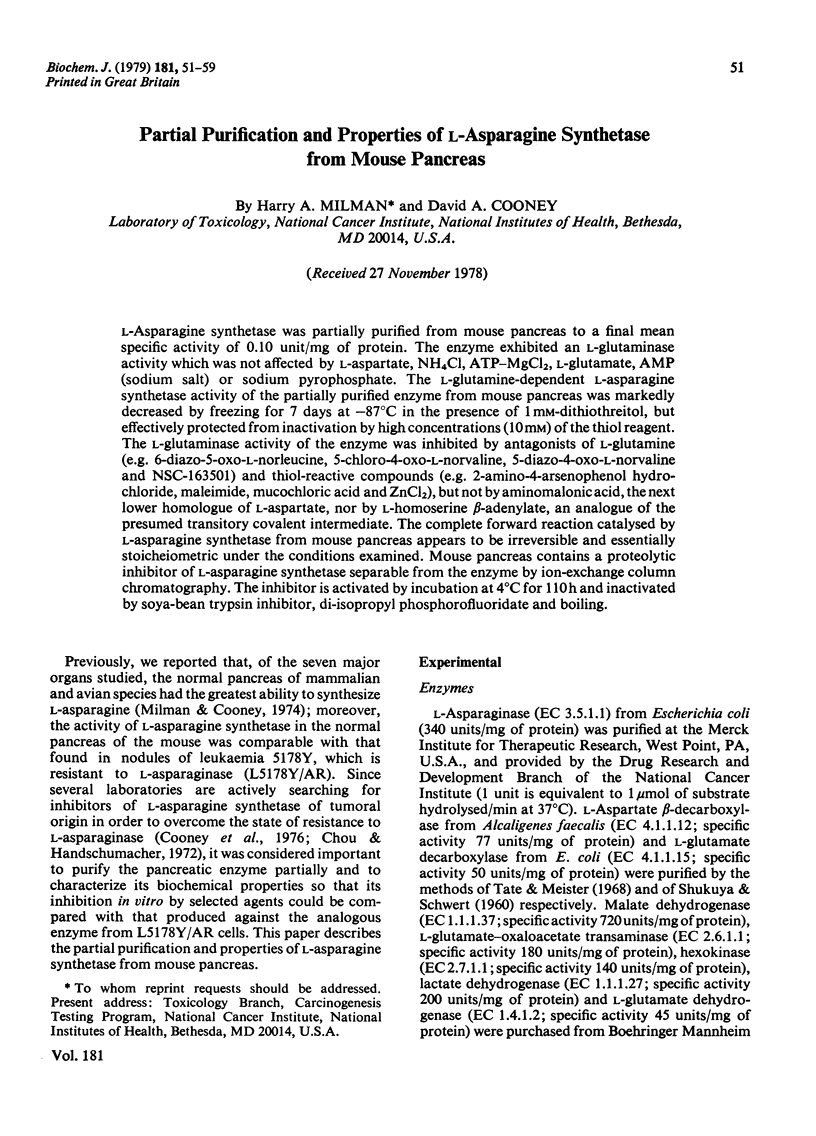
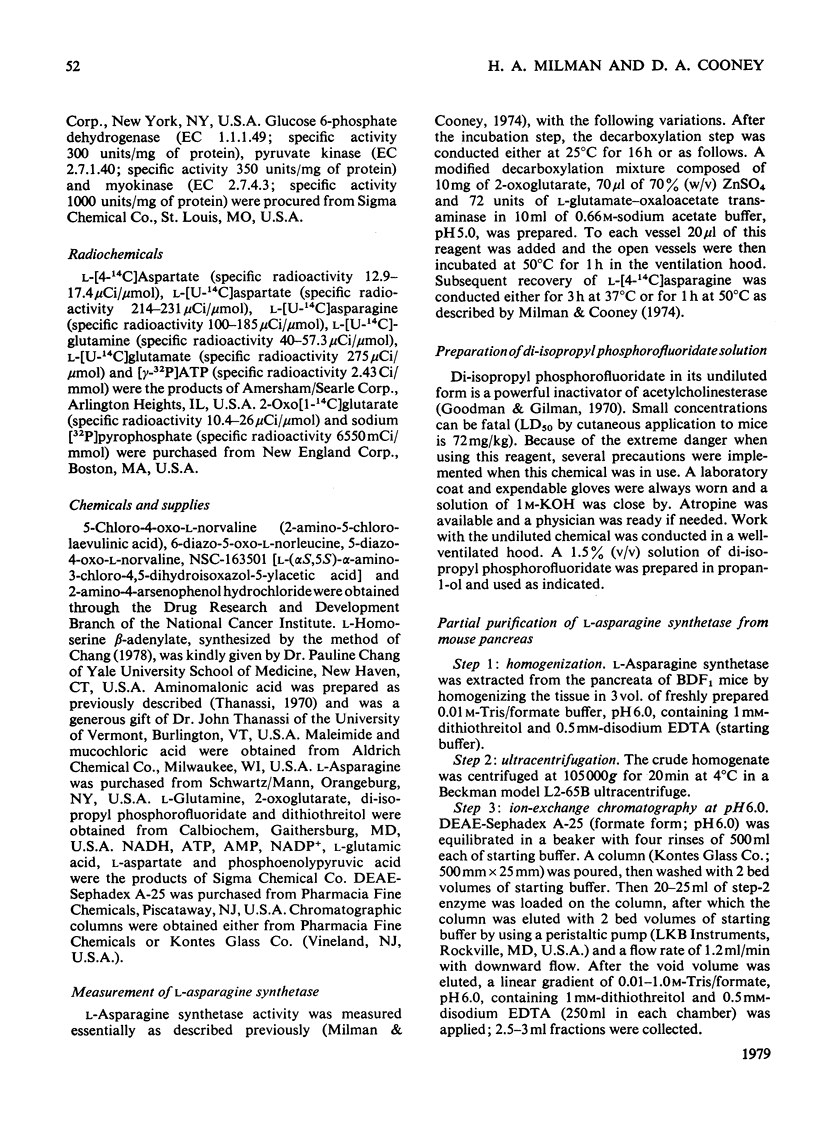
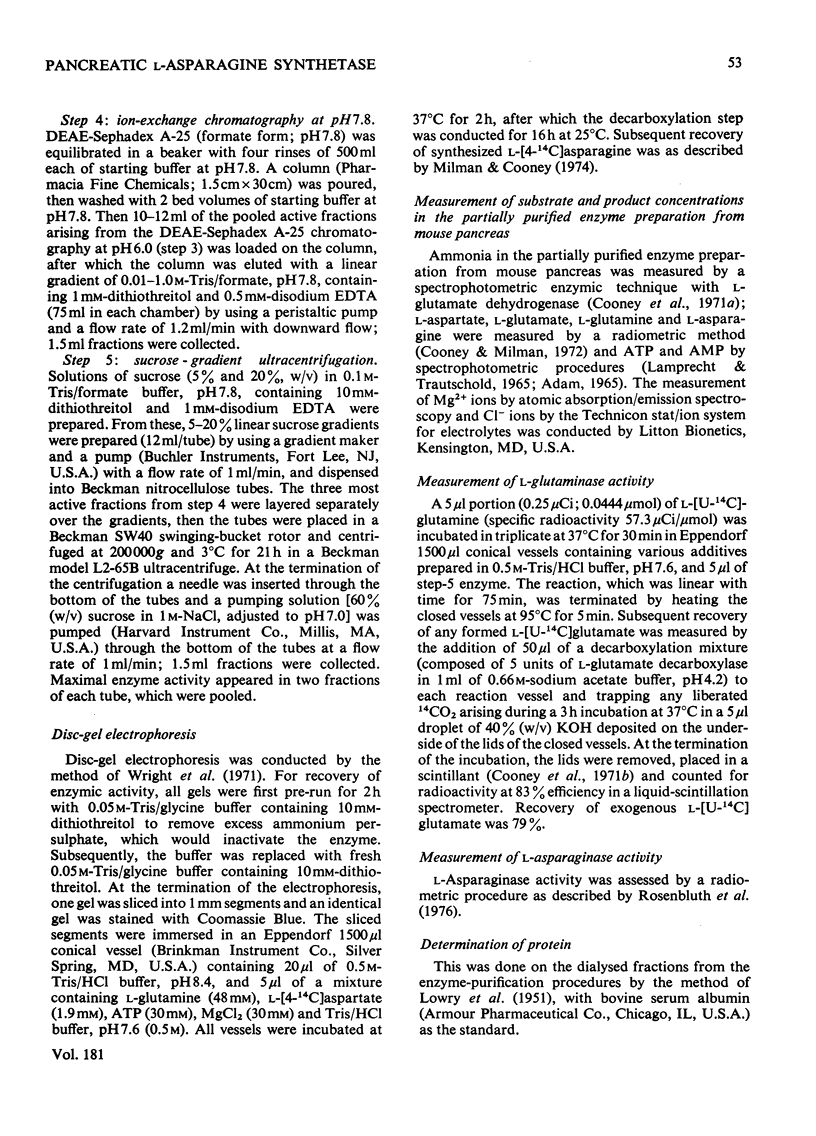
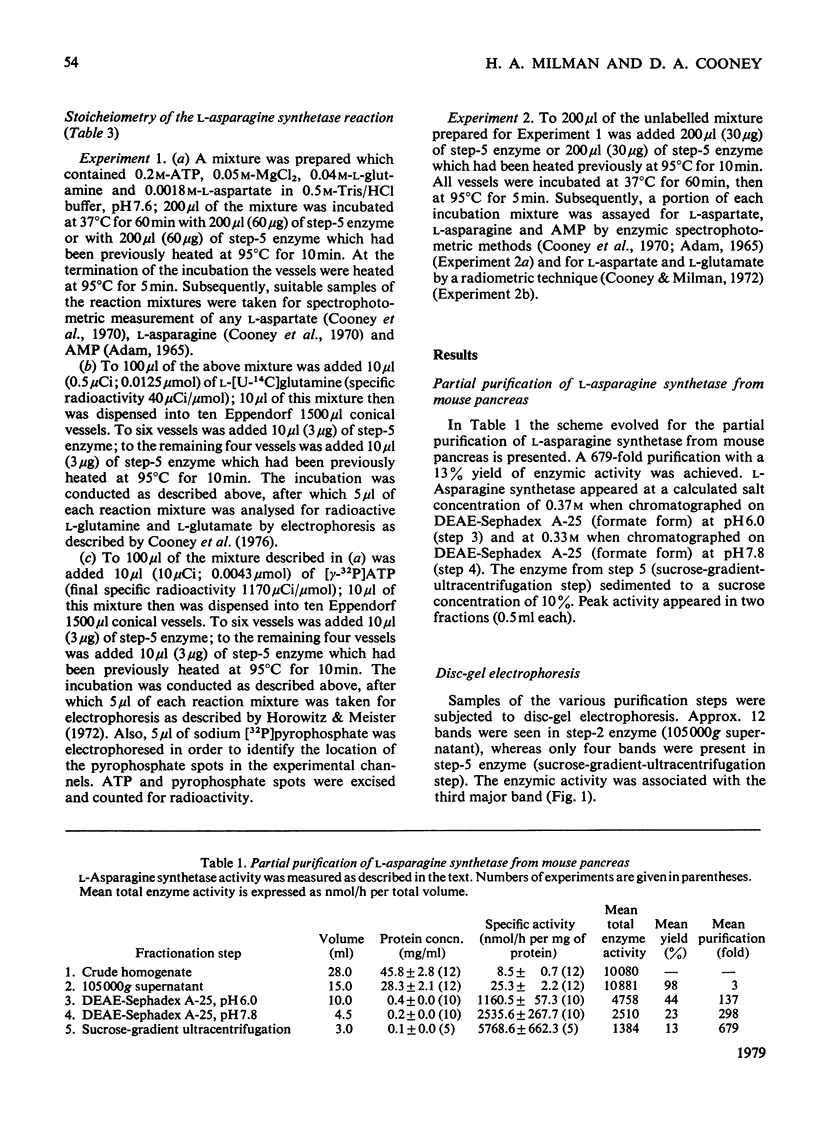
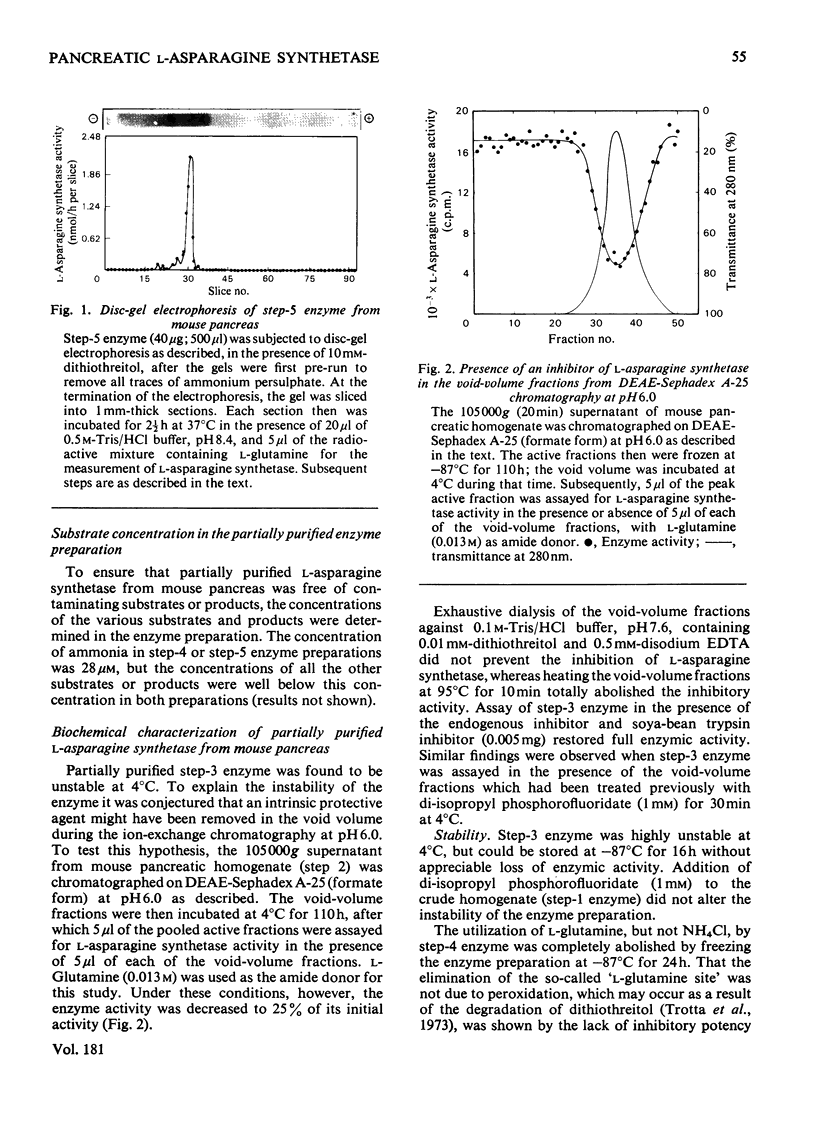
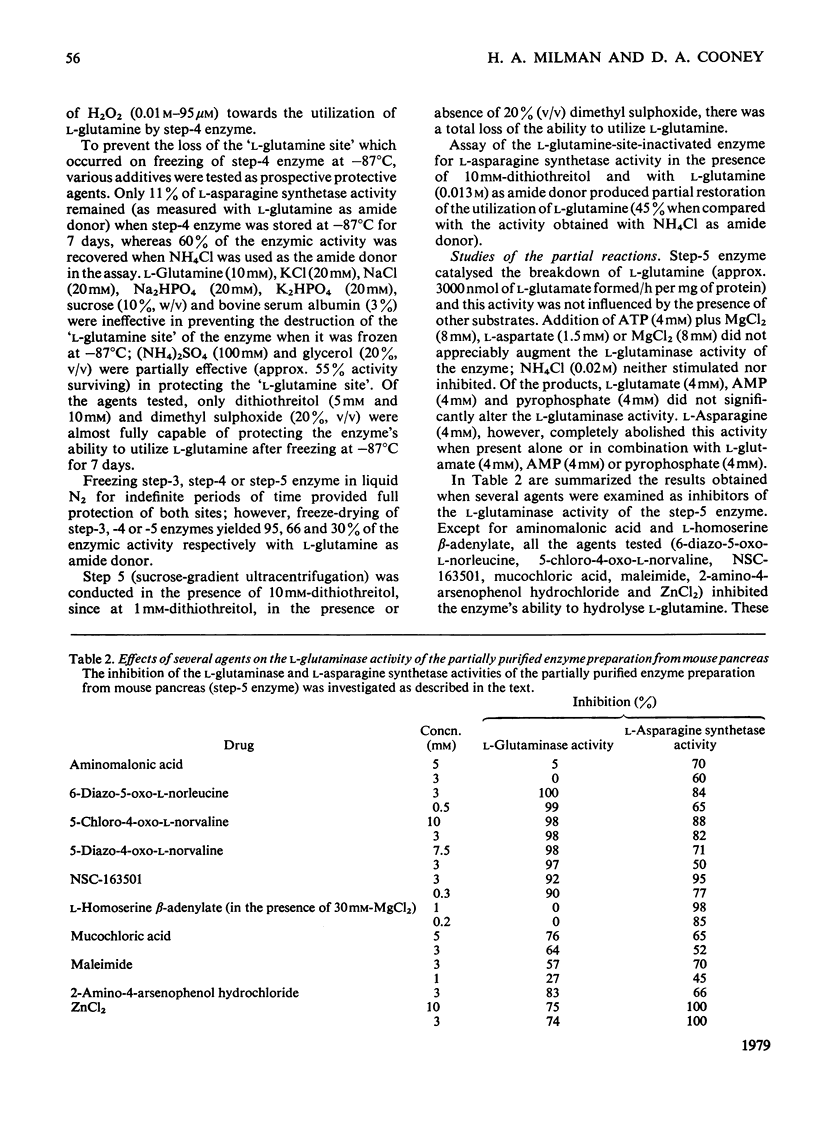
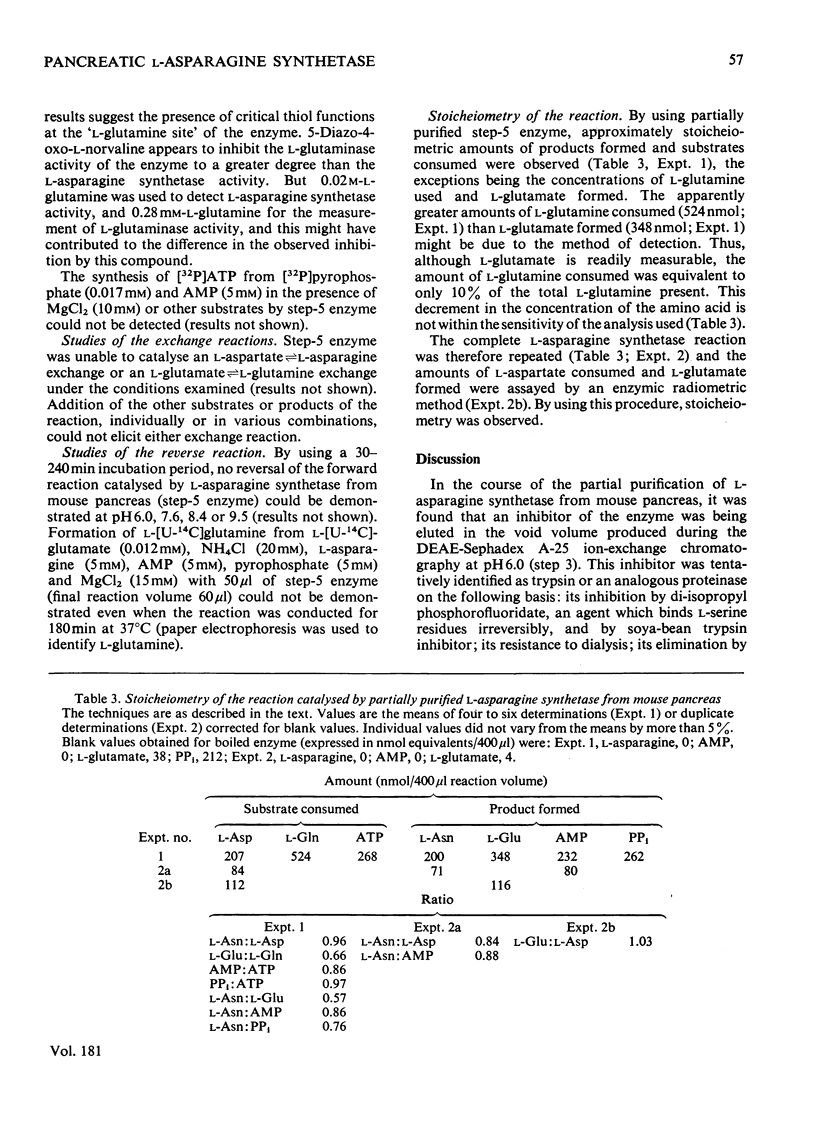
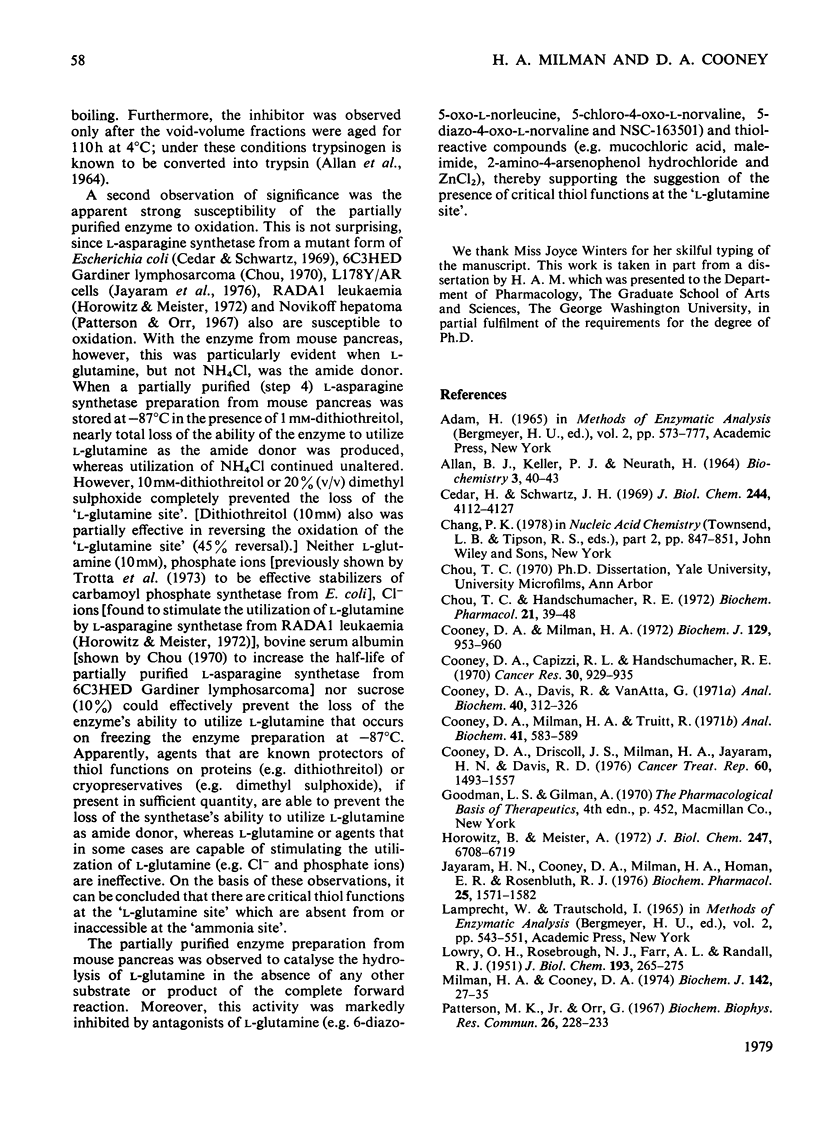
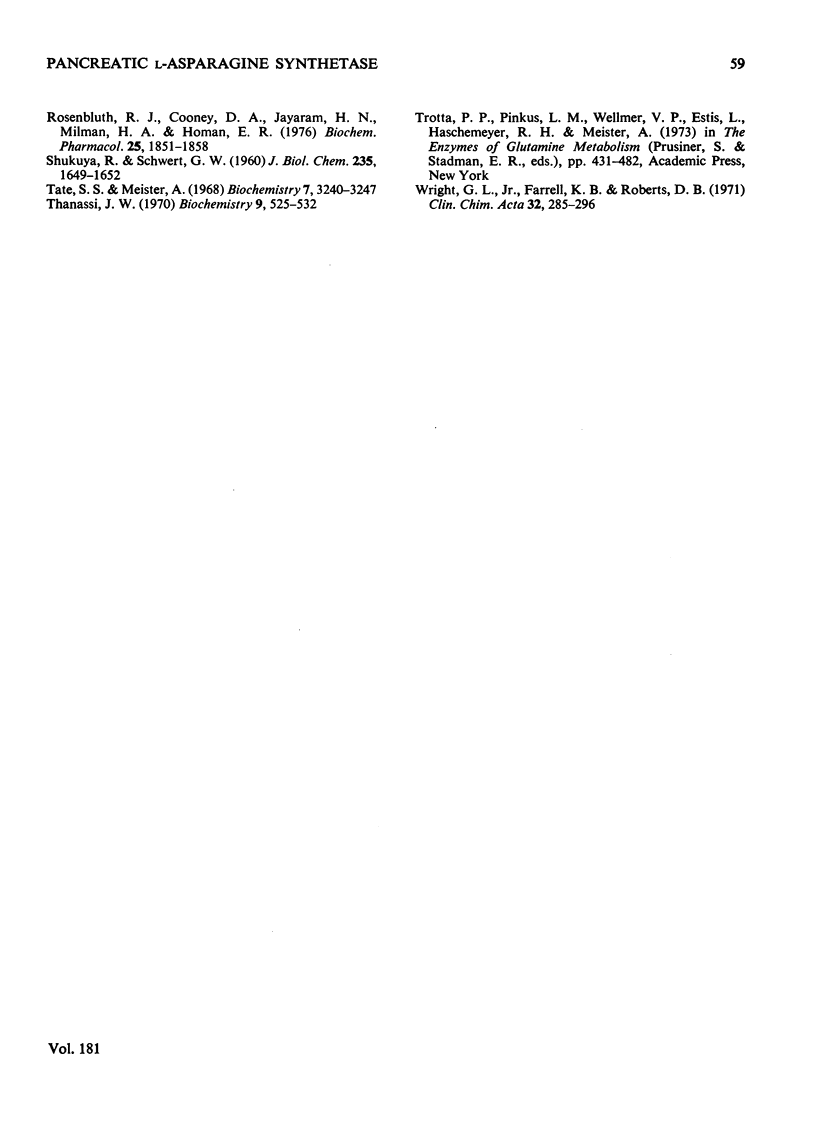
Images in this article
Selected References
These references are in PubMed. This may not be the complete list of references from this article.
- ALLAN B. J., KELLER P. J., NEURATH H. PROCEDURES FOR THE ISOLATION OF CRYSTALLINE BOVINE PANCREATIC CARBOXYPEPTIDASE A. I. ISOLATION FROM ACETONE POWDERS OF PANCREAS GLANDS. Biochemistry. 1964 Jan;3:40–43. doi: 10.1021/bi00889a007. [DOI] [PubMed] [Google Scholar]
- Cedar H., Schwartz J. H. The asparagine synthetase of Escherhic coli. I. Biosynthetic role of the enzyme, purification, and characterization of the reaction products. J Biol Chem. 1969 Aug 10;244(15):4112–4121. [PubMed] [Google Scholar]
- Chou T. C., Handschumacher R. E. Production of L-asparagine by tumor cells and the effect of asparagine analogs. Biochem Pharmacol. 1972 Jan;21(1):39–48. doi: 10.1016/0006-2952(72)90248-1. [DOI] [PubMed] [Google Scholar]
- Cooney D. A., Capizzi R. L., Handschumacher R. E. Evaluation of L-asparagine metabolism in animals and man. Cancer Res. 1970 Apr;30(4):929–935. [PubMed] [Google Scholar]
- Cooney D. A., Driscoll J. S., Milman H. A., Jayaram H. N., Davis R. D. Inhibitors of L-asparagine synthetase, in vitro. Cancer Treat Rep. 1976 Oct;60(10):1493–1557. [PubMed] [Google Scholar]
- Cooney D. A., Milman H. A. A radiometric technique for measuring L-asparagine in picomole quantities. Biochem J. 1972 Oct;129(4):953–960. doi: 10.1042/bj1290953. [DOI] [PMC free article] [PubMed] [Google Scholar]
- Cooney D. A., Milman H. A., Truitt R. Disposable and versatile vessels for microdiffusion studies. Anal Biochem. 1971 Jun;41(2):583–589. doi: 10.1016/0003-2697(71)90182-5. [DOI] [PubMed] [Google Scholar]
- Cooney D., Davis R., Van Atta G. A spectrophotometric method for the simultaneous measurement of L-glutamine and L-asparagine in biological materials. Anal Biochem. 1971 Apr;40(2):312–326. doi: 10.1016/0003-2697(71)90389-7. [DOI] [PubMed] [Google Scholar]
- Horowitz B., Meister A. Glutamine-dependent asparagine synthetase from leukemia cells. Chloride dependence, mechanism of action, and inhibition. J Biol Chem. 1972 Oct 25;247(20):6708–6719. [PubMed] [Google Scholar]
- Jayaram H. N., Cooney D. A., Milman H. A., Homan E. R., Rosenbluth R. J. Don, conv and donv--I. Inhibition of L-asparagine synthetase in vitro. Biochem Pharmacol. 1976 Jul 15;25(14):1571–1582. doi: 10.1016/0006-2952(76)90466-4. [DOI] [PubMed] [Google Scholar]
- LOWRY O. H., ROSEBROUGH N. J., FARR A. L., RANDALL R. J. Protein measurement with the Folin phenol reagent. J Biol Chem. 1951 Nov;193(1):265–275. [PubMed] [Google Scholar]
- Milman H. A., Cooney D. A. The distribution of L-asparagine synthetase in the principal organs of several mammalian and avian species. Biochem J. 1974 Jul;142(1):27–35. doi: 10.1042/bj1420027. [DOI] [PMC free article] [PubMed] [Google Scholar]
- Patterson M. K., Jr, Orr G. L-asparagine biosynthesis by nutritional variants of the Jensen sarcoma. Biochem Biophys Res Commun. 1967 Jan 23;26(2):228–233. doi: 10.1016/0006-291x(67)90239-2. [DOI] [PubMed] [Google Scholar]
- Rosenbluth R. J., Cooney D. A., Jayaram H. N., Milman H. A., Homan E. R. DON, CONV and DONV-II. Inhibition of L-'asparagine synthetase in vivo. Biochem Pharmacol. 1976 Aug 15;25(16):1851–1858. doi: 10.1016/0006-2952(76)90189-1. [DOI] [PubMed] [Google Scholar]
- SHUKUYA R., SCHWERT G. W. Glutamic acid decarboxylase. I. Isolation procedures and properties of the enzyme. J Biol Chem. 1960 Jun;235:1649–1652. [PubMed] [Google Scholar]
- Tate S. S., Meister A. Studies on the sulfhydryl groups of L-aspartate beta-decarboxylase. Biochemistry. 1968 Sep;7(9):3240–3247. doi: 10.1021/bi00849a029. [DOI] [PubMed] [Google Scholar]
- Thanassi J. W. Aminomalonic acid. Spontaneous decarboxylation and reaction with 5-deoxypyridoxal. Biochemistry. 1970 Feb 3;9(3):525–532. doi: 10.1021/bi00805a011. [DOI] [PubMed] [Google Scholar]
- Wright G. L., Jr, Farrell K. B., Roberts D. B. Gradient polyacylamide gel electrophoresis of human serum proteins: improved discontinuous gel electrophoretic technique and identification of individual serum components. Clin Chim Acta. 1971 Apr;32(2):285–296. doi: 10.1016/0009-8981(71)90345-7. [DOI] [PubMed] [Google Scholar]



